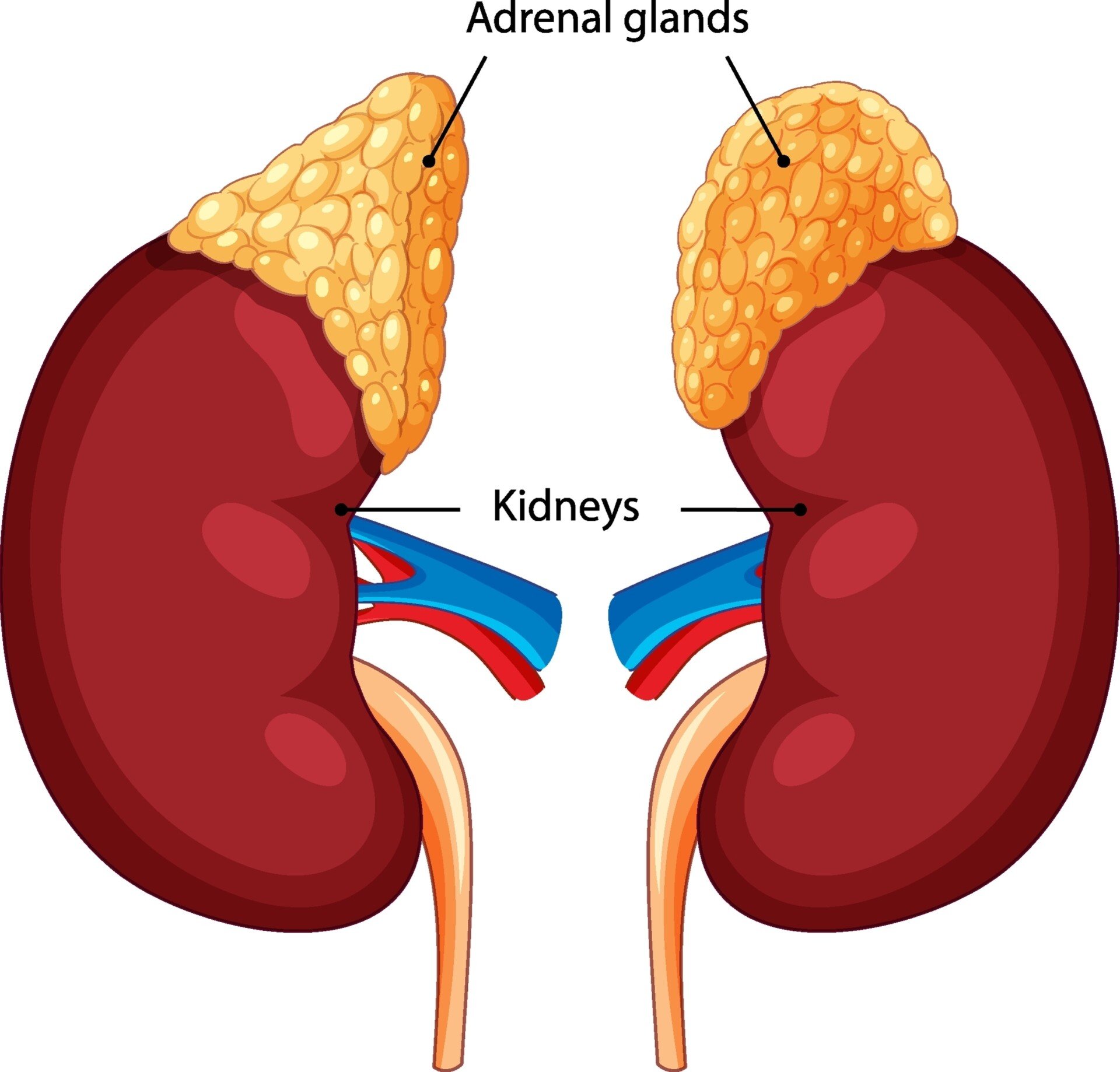Adrenaline (epinephrine) is a powerful chemical messenger that acts primarily as a hormone released into the bloodstream by the adrenal glands. Although it shares structural similarities with neurotransmitters and may act in that role in rare cases, its central nervous system activity is largely mediated by norepinephrine.
Produced and released by the adrenal glands, especially the adrenal medulla, in response to sympathetic nervous system activity, adrenaline’s primary biological function is to prepare the body for “fight or flight”.
This involves increasing heart rate, blood pressure, respiration, and releasing energy reserves to muscles. These widespread effects are sustained as it circulates through the bloodstream.

Adrenaline: Hormone vs. Neurotransmitter
When acting as a hormone, adrenaline is primarily produced by the adrenal glands, located atop the kidneys.
It is then secreted directly into the bloodstream, allowing it to travel throughout the entire body and produce widespread effects.
Hormonal responses are generally slower, often taking minutes to influence target cells, but their effects tend to be longer-lasting.
As a neurotransmitter, adrenaline (or its closely related form, norepinephrine) is released by specific neurons in the brain and spinal cord.
The key distinction lies in its mode of transmission: neurotransmitters are released into tiny gaps between neurons called synapses. This localized release allows for rapid, almost instantaneous, communication, typically within milliseconds.
Adrenaline vs noradrenaline
- Adrenaline (Epinephrine): Released by adrenal glands into the bloodstream, it primarily triggers widespread physical responses like increased heart rate, blood pressure, and energy supply to muscles.
- Noradrenaline (Norepinephrine): Primarily functions as a neurotransmitter released at synapses by specific neurons in the brain and spinal cord. It’s more involved in cognitive/mental alertness and arousal.
Adrenaline’s role as a hormone
Below describes adrenaline’s role as a hormone in the body:
Release and Circulation
As a hormone, adrenaline is primarily produced and secreted by the adrenal glands, which are located on top of the kidneys.
Unlike neurotransmitters that act locally at synapses, hormones like adrenaline are released directly into the bloodstream. This allows it to travel throughout the entire body to reach its target cells and organs.
Role in “Fight-or-Flight” Response
Adrenaline’s main function as a hormone is to prepare the body for the “fight-or-flight” response during stressful or emergency situations. This involves a cascade of widespread physiological changes including:
- Increased heart rate and blood pressure.
- Dilated pupils.
- Increased respiration and sweating.
- Release of energy reserves (like glucose from the liver) to muscles.
- Reduction of non-vital functions, such as gastrointestinal activity and urinary requirements.
These effects are slower to take hold compared to neurotransmitter actions, but they are more widespread and tend to be longer-lasting, helping to sustain the body’s readiness for action after the initial neural response.

Adrenaline’s Role in the Brain
While adrenaline (epinephrine) and noradrenaline (norepinephrine) are chemically similar, it is norepinephrine that primarily functions as a neurotransmitter in the brain.
Adrenaline’s activity within the brain is limited, as it does not readily cross the blood-brain barrier.
Most of the central effects commonly attributed to “adrenaline” are actually mediated by norepinephrine, which plays a key role in the brain’s response to stress and arousal.
Increases Alertness and Arousal
Norepinephrine enhances physiological arousal by increasing heart rate, blood pressure, and alertness.
It is released from neurons originating in the locus coeruleus, a brainstem region that plays a central role in maintaining wakefulness, attention, and vigilance.
This noradrenergic activity prepares the body and brain for quick responses to potential threats.
Sharpens Attention and Reaction Time
Activation of the sympathetic nervous system boosts norepinephrine levels, which heightens sensory processing and enhances access to energy reserves.
This facilitates quicker reaction times and sharper attention—both essential during stressful or emergency situations.
Involved in Emotion Regulation (Fear and Anxiety)
The amygdala, a key structure in the brain’s limbic system, is involved in processing fear and emotional salience. It interacts closely with noradrenergic pathways from the locus coeruleus.
Abnormal increases in norepinephrine activity are associated with heightened emotional reactivity and may contribute to panic attacks and anxiety disorders.
Certain medications that target this system can either provoke or reduce panic symptoms.
Helps Form Vivid Memories during Emotional Events
Emotionally intense experiences activate both the amygdala and stress hormone systems, including the release of norepinephrine and peripheral adrenaline.
These signals enhance the encoding of emotionally significant memories.
Although adrenaline itself doesn’t enter the brain, it influences memory indirectly by stimulating vagal nerve pathways and promoting norepinephrine release in the amygdala.
This interaction helps explain “flashbulb memories”—vivid, detailed recollections of emotionally charged events.

